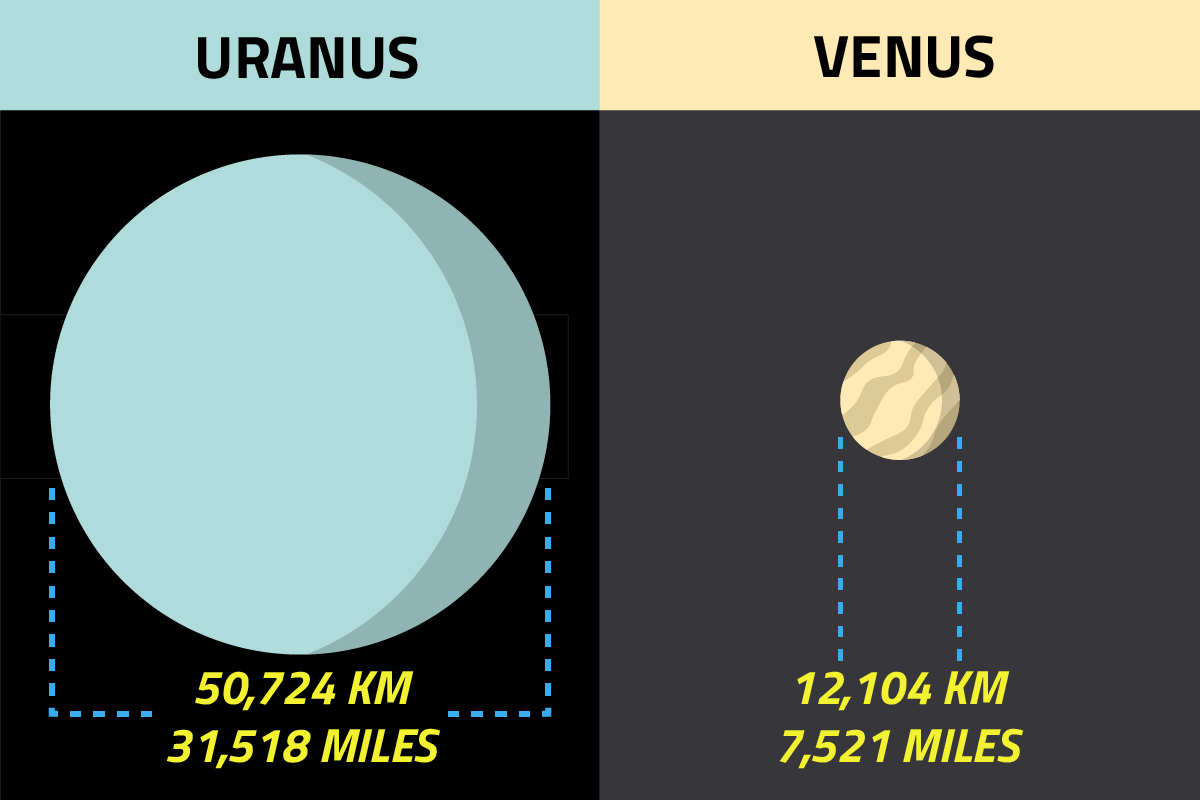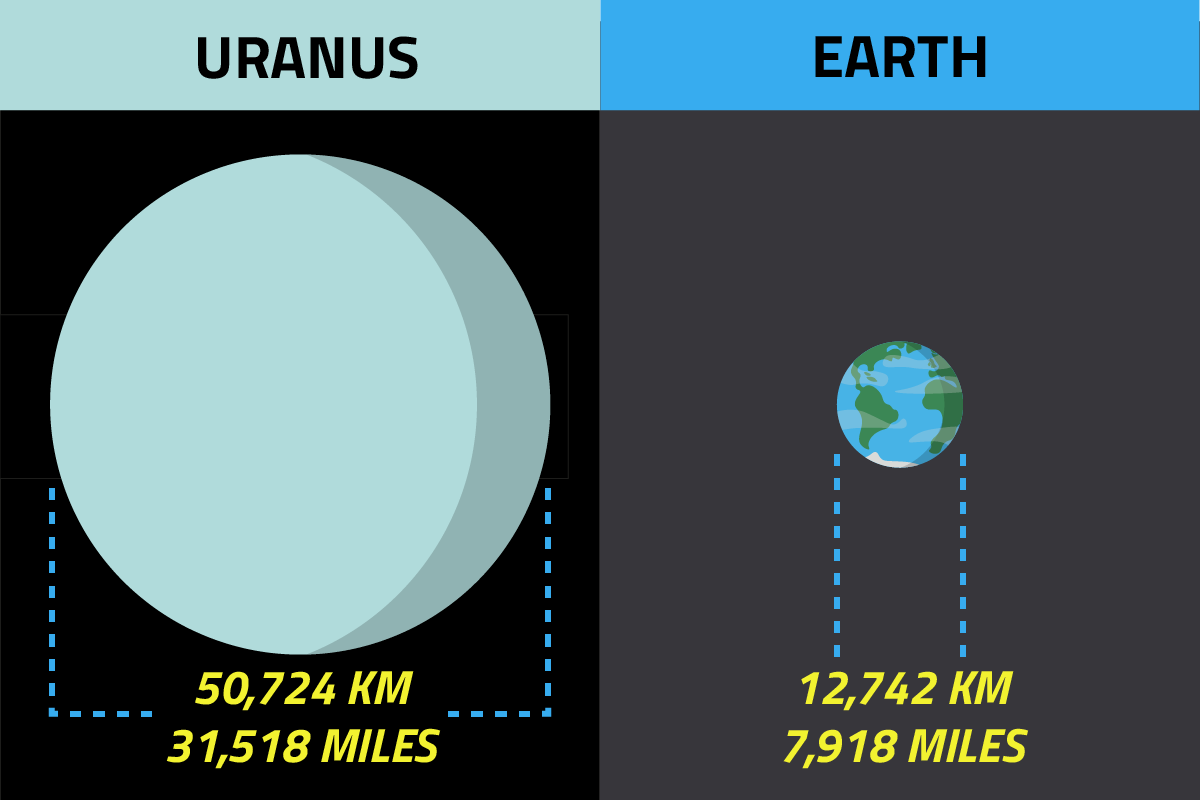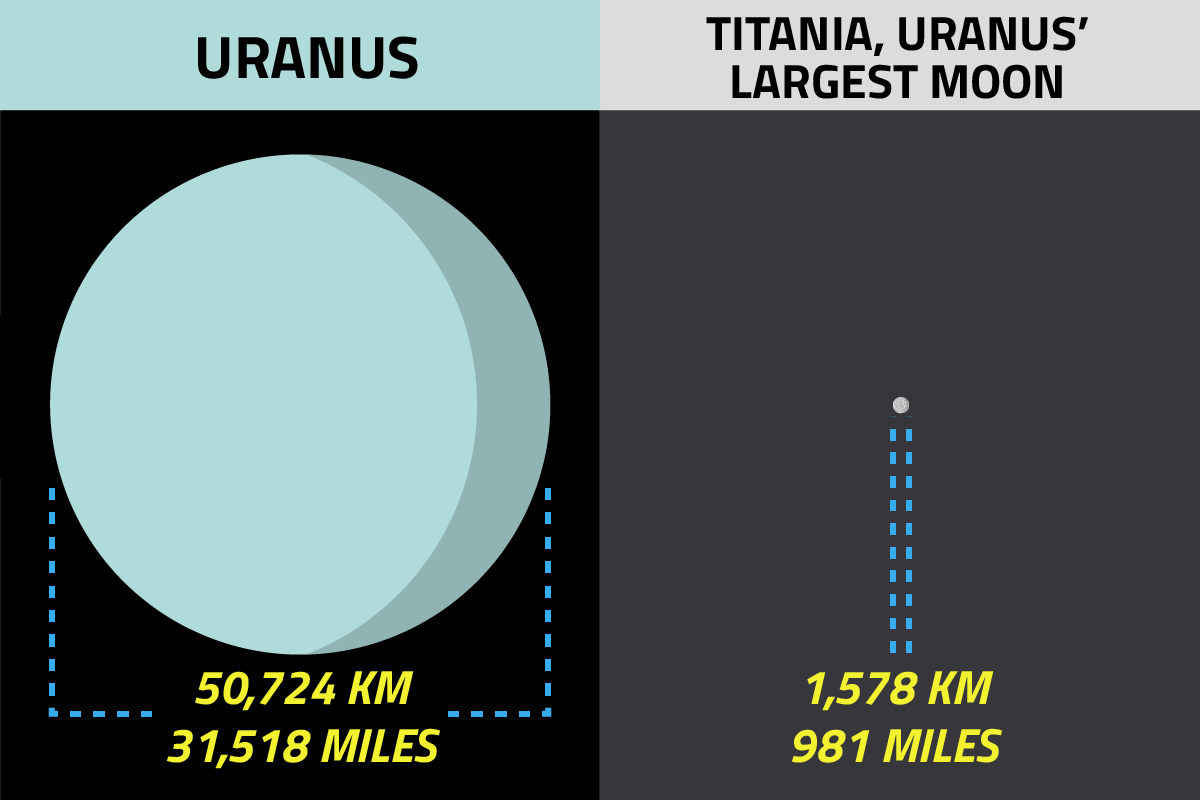Welcome to Uranus
Uranus is the seventh planet from the Sun in the Solar System. It's a bluey-greeny gas giant that was discovered in 1781 by William Herschel. This makes Uranus the first planet to be discovered as the planets known before its discovery are easily visible from Earth and have been known about for thousands of years. Uranus orbits on its side and has at least 27 moons known to orbit it, most of which are named after characters in the plays of William Shakespeare.
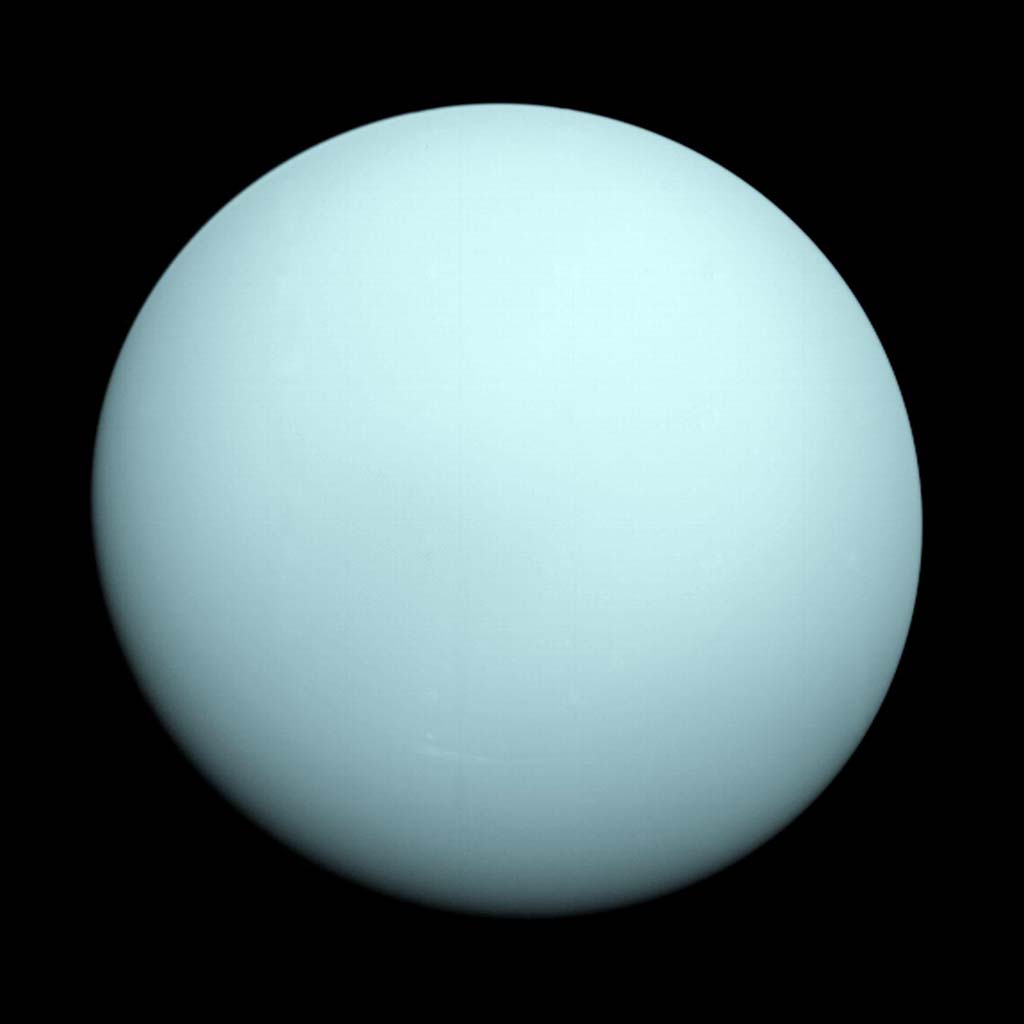 Uranus from Voyager 2 in 1986, courtesy of NASA/JPL-Caltech
Uranus from Voyager 2 in 1986, courtesy of NASA/JPL-Caltech
1,784,863,343 miles
19.20 A.U.
31,518 miles
-320 °F
Uranus is the seventh planet from the Sun. It is the second to last planet in the Solar System. Neptune is the only planet more distant than it. Uranus orbits the Sun at an average distance of about 2.87 billion kilometres (1.78 billion miles), taking 84 years to complete a full journey around the it. Uranus is 19 times more distant from the Sun than Earth is.
Planets don't have exactly circular orbits. Their orbits are instead slightly oval-shaped, or elliptical. Uranus' closest distance to the Sun in its orbit, known as its perihelion, is 2.5 billion kilometres (1.7 billion miles). Its most distant distance, its aphelion, is 3 billion kilometres (1.9 billion miles)
Uranus is situated between the orbits of Saturn and Neptune. Uranus is twice as far out from the Sun than Saturn is, and as it's also smaller, it is very difficult to see without the use of a telescope or good binoculars. This is part of the reason why Uranus isn't one of the planets to have been known about by ancient civilisations. It was only after technology like telescopes had been invented that it became possible to look deeper into space and find new worlds. Uranus was the first new planet to be discovered in the solar system when William Herschel pointed his homemade telescope at it and discovered it by chance in 1781.
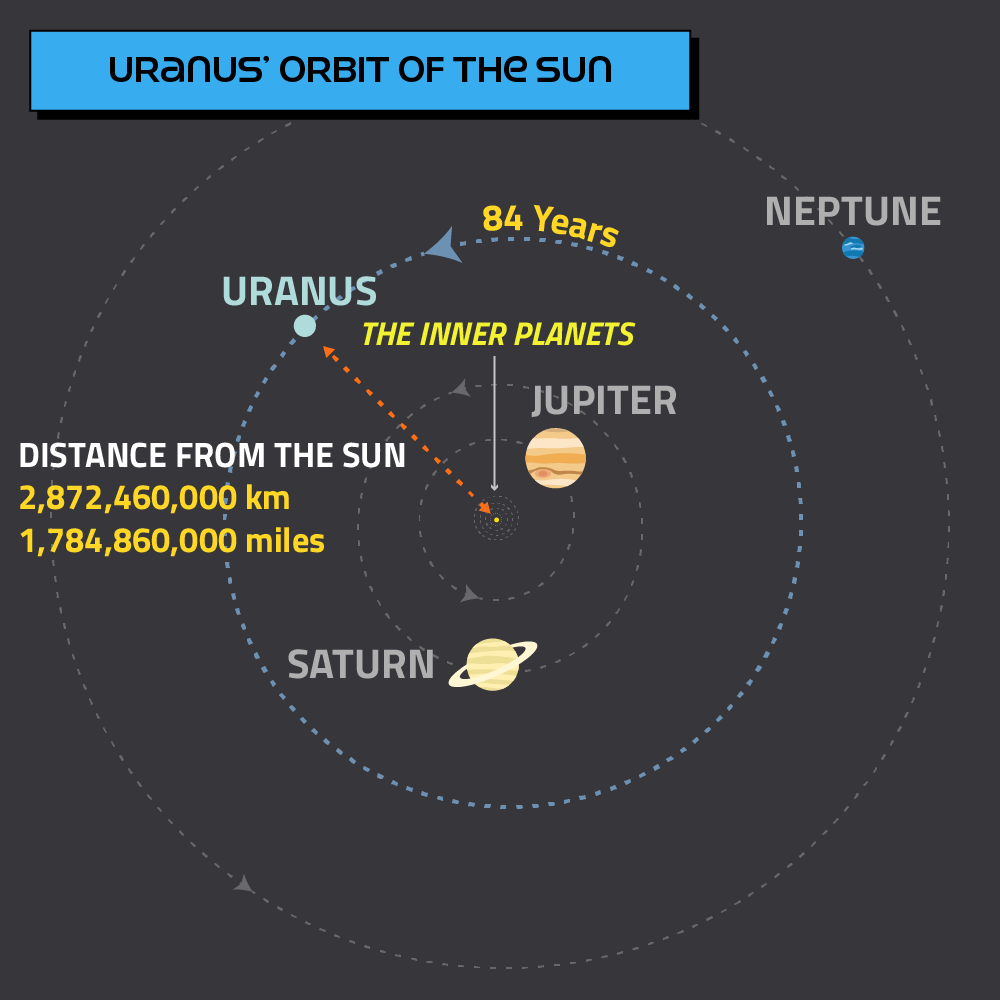
Uranus is one of the outer planets. The outer planets (Jupiter, Saturn, Uranus and Neptune) are balls of mostly gas and are also known as the gas giants. They are the four largest planets in the Solar System. Uranus is the Solar System's third largest planet, smaller than Jupiter and Saturn but larger than the rest. Uranus is often regarded as a twin planet to Neptune as they are both made up of the same gases (hydrogen, helium and methane), are a similar blueish colour, and are very close in size. Use our amazing size comparison thingy whatsit to see just how close!
The diameter of Uranus is 50,724 kilometres (31,518 miles). This is its width across its equator. If you wanted to travel all the way around the planet's equator, its circumference is 159,354 kilometers (99,018 miles). Quite why you'd want to do that, we're not too sure. Uranus isn't particularly exciting.
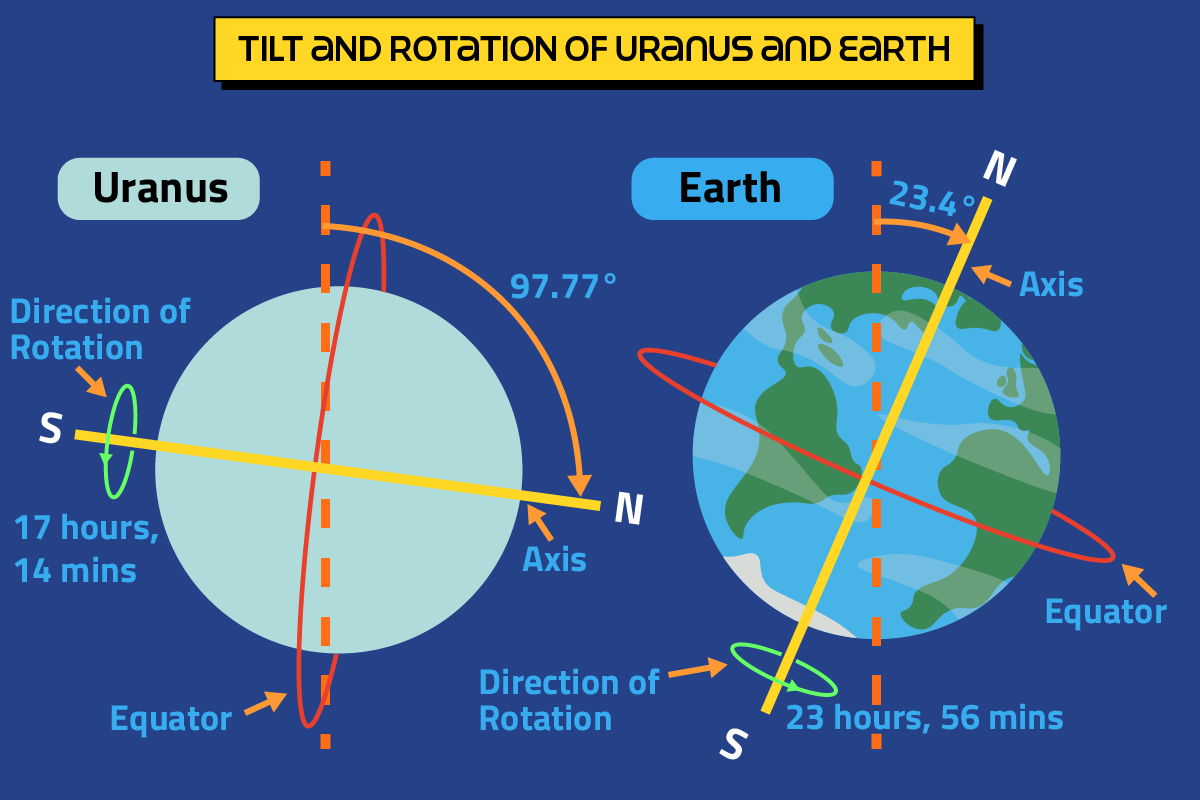
As Uranus travels around the Sun, it also rotates on its axis. An axis is a make-believe stick that runs through the centre of a planet. One full rotation is equal to a day on that planet. Earth rotates once every 24 hours (23 hours, 56 minutes to be precise), which is why days are 24 hours long. Uranus rotates once on its axis every 17 hours and 14 minutes. Guess how long that means a day is on Uranus? If you said 17 hours and 14 minutes, you win a special Bob the Alien once in a lifetime two week stay on Uranus. You'll have to organise your own transportation there though.
Each planet in the Solar System is tilted. Mercury is the least tilted planet and stands almost upright. Uranus however is the most tilted. In fact, it's so tilted that it appears to have toppled over and actually orbits the Sun on its side.
It's not known for definite why Uranus is is tilted so much. Scientists think that at some point in its early formation, a large moon or planet-sized object collided into Uranus and knocked it over. Ever since, it's remained a topsy turvy world which where North is East and South is West.
Making things even more confusing for Uranus is that its direction of rotation is opposite to most of the rest of the planets too. Most planets rotate in an anti-clockwise rotation. Uranus is one exception, while Venus is another.
Another effect of Uranus rotating on its side is that rather than its moons appearing to orbit around it, they go up and over it instead. Yes, Uranus may look like a bit of a dull planet, but it certainly has an exciting rotation. Well, that is if you find rotations exciting. Bobsdog and I certainly do.







